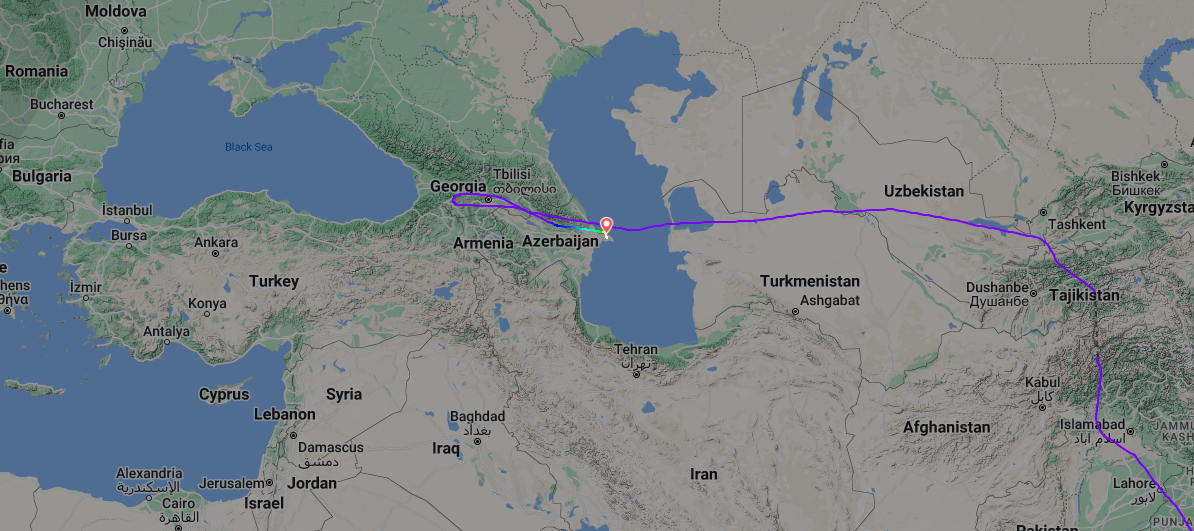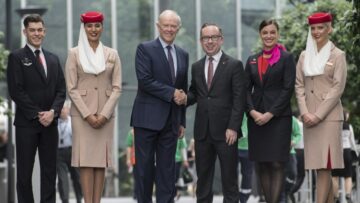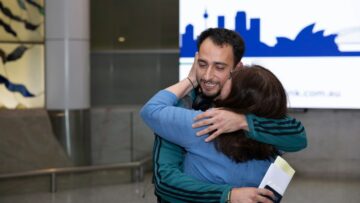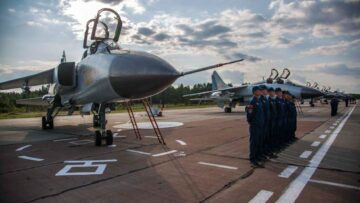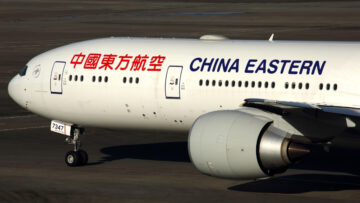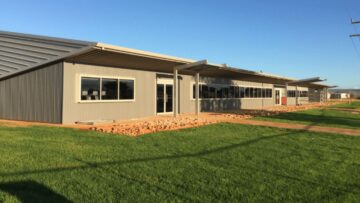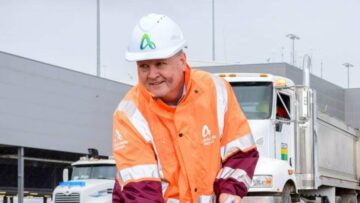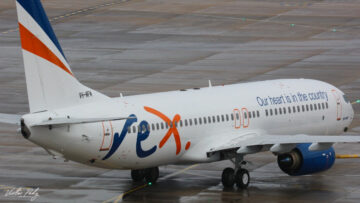Qantas A380 VH-OQD is en route from Sydney to Baku in an attempt to get stranded passengers in Azerbaijan to the UK in time to celebrate Christmas Day.
The aircraft departed the NSW capital at 11:38am and is estimated to arrive at 7:43pm before it heads onwards to London. Qantas has reassured the more than 300 passengers that they will arrive on the morning of 25 December. You can track the flight here.
The Flying Kangaroo’s original A380, VH-OQH, was en route from Sydney to London via Singapore on Friday when a sensor light alerted pilots to the possibility of smoke in the cargo hold.
Initial investigations, though, have revealed no evidence of smoke, meaning the incident was likely a result of a fault with the sensor.
QF1 was nine hours into its 13-hour flight to the British capital when it was forced to turn around above Tbilisi, Georgia.
Heydar Aliyev International Airport, in Baku, has one of the longest runways in the area and is a popular choice for aircraft to make emergency landings. It was meant there by emergency services.
The grounding of VH-OQH will have knock-on effects for not only the passengers in Azerbaijan trying to get to London for Christmas but all customers who have booked to fly with Qantas either way on its Kangaroo route over the coming days.
PROMOTED CONTENT
However, Qantas is now confident it can save Christmas for those on board.
“We know this has been a significant disruption for customers ahead of Christmas however, we will always put safety before schedule,” said the national carrier.
“We have apologised and thanked them for their patience while we finalised the recovery plans. They have spent the night at the Marriott Hotel and been provided with meals and transport.”
Qantas grounded its entire fleet of A380s during the pandemic, with most sent to the Victorville desert ‘boneyard’.
The Flying Kangaroo has been slowly returning them to active service, though plans to permanently scrap two.
So far, VH-OQB, VH-OQD, VH-OQH, VH-OQK and VH-OQJ have returned to active operations, but VH-OQC, VH-OQI remain in the desert.
VH-OQL and VH-OQA are currently in Abu Dhabi, where they are receiving a cabin upgrade. VH-OQF has already been dismantled, with speculation that it will be joined on the scrap heap by VH-OQE.
VH-OQA, Qantas’ first A380, was involved in arguably Australian aviation’s most serious-ever safety incident, when its Rolls-Royce Trent 900 engine exploded shortly after it took off, causing a major fire in November 2010.
Despite significant structural and systems damage, Captain de Crespigny and his colleagues in the flight deck — Qantas’ first A380 named after Australian aviation legend Nancy-Bird Walton — managed to return to Singapore Changi Airport for a safe landing.
No passengers or crew were injured.
Investigators later found the failure was due to a fatigue crack in an oil feed-pipe in the number two engine of the aircraft. This led to an internal oil leak and fire, with the turbine disc eventually bursting through the engine casing.
VH-OQA, meanwhile, underwent significant repairs after the incident that took 16 months to complete and cost $139 million before it eventually returned to service in April 2012.
Qantas chief executive Alan Joyce used the incident to reject calls for airlines to have just one pilot in the cockpit of its aircraft.
“We had five amazing pilots in the cockpit, and without that, I don’t think that aircraft would have landed safely,” he said in a new interview. “We know that, and we’re very conscious of it.”
- SEO Powered Content & PR Distribution. Get Amplified Today.
- Platoblockchain. Web3 Metaverse Intelligence. Knowledge Amplified. Access Here.
- Source: https://australianaviation.com.au/2022/12/live-qantas-saves-christmas-as-a380-vh-oqd-heads-to-baku/
- 11
- 7
- a
- above
- abu dhabi
- active
- After
- ahead
- aircraft
- Airlines
- airport
- All
- already
- always
- amazing
- and
- April
- AREA
- around
- Australian
- aviation
- before
- board
- British
- capital
- causing
- celebrate
- chief
- choice
- Christmas
- Cockpit
- colleagues
- COM
- coming
- complete
- confident
- conscious
- Cost
- crack
- Currently
- Customers
- day
- Days
- December
- Dhabi
- Disruption
- Dont
- during
- effects
- either
- emergency
- Engine
- Entire
- estimated
- eventually
- evidence
- executive
- Failure
- fatigue
- Fire
- First
- FLEET
- flight
- flying
- found
- Friday
- from
- Georgia
- get
- heads
- here
- hold
- hotel
- HOURS
- However
- HTML
- HTTPS
- in
- incident
- internal
- International
- Investigations
- involved
- IT
- joined
- just one
- Know
- landing
- leak
- Led
- light
- likely
- London
- major
- make
- managed
- max-width
- meaning
- Meanwhile
- million
- months
- more
- morning
- most
- Named
- National
- New
- night
- November
- November 2010
- number
- Oil
- ONE
- Operations
- original
- pandemic
- Patience
- permanently
- pilot
- plans
- plato
- Plato Data Intelligence
- PlatoData
- Popular
- possibility
- provided
- put
- receiving
- recovery
- remain
- result
- return
- returning
- Revealed
- Rolls-Royce
- Route
- safe
- safely
- Safety
- Said
- Save
- schedule
- service
- Services
- Shortly
- significant
- Singapore
- Slowly
- Smoke
- speculation
- spent
- structural
- sydney
- Systems
- The
- The Area
- the UK
- their
- Through
- time
- to
- track
- transport
- Uk
- upgrade
- via
- while
- WHO
- will
- without
- would
- zephyrnet

